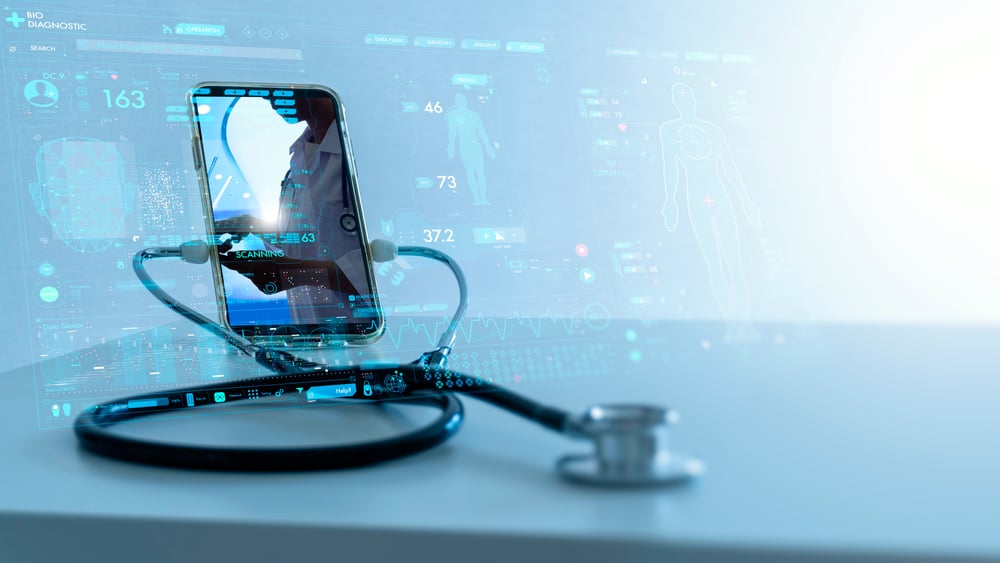There are certain items that necessitate multiple components to benefit consumers. You can own the most polished and decked out convertible, but without an engine in it, you’re not going to be taking it many places to show it off.
Similarly, smartphones offer capabilities to help you check the weather, communicate with friends and family, pay bills, check sports scores, and so much more. However, if you’re without a charger for your phone, it’s most likely not going to do you any good.
Healthcare technology is another type of product that often works better when it’s utilized with other components. For example, an electronic health record doesn’t aid a physician when she can’t access it during her patient’s visit. It’s also not very helpful when her patient has to fill out the same medical information each time she sees a new provider.
Interoperability 101
Many healthcare providers find themselves facing challenges due to the lack of interoperability between technologies designed to streamline workflows and improve patient care. Having the right resources in place gives these technologies the capability to promote interoperability across the healthcare community.

With the “ability of different information systems, devices and applications (systems) to access, exchange, integrate and cooperatively use data in a coordinated manner,” healthcare organizations are boundaryless in terms of region and portability. They can access, use, and share information as well as optimize the health of their patients and their communities around the globe.
Let’s look at 4 levels of interoperability:
- Foundational (Level 1): This level establishes the interconnectivity requirements needed for one system or application to securely communicate data to and receive data from another.
- Structural (Level 2): This level defines the format, syntax, and organization of data exchange, including at the data field level for interpretation.
- Semantic (Level 3): This level provides for common underlying models and codification of the data. This includes the use of data elements with standardized definitions from publicly available value sets and coding vocabularies, providing shared understanding and meaning to the user.
- Organizational (Level 4):This level includes governance, policy, social, legal, and organizational considerations to facilitate the secure, seamless, and timely communication and use of data both within and between organizations, entities, and individuals. These components enable shared consent, trust, and integrated end-user processes and workflows.
Why interoperability matters to providers and patients
Interoperability could save the United States healthcare system more than $30 billion a year. Although fewer about 4 in 10 health systems are successfully sharing their data with other systems, those that do achieve a bevy of benefits, including:
- improved staff productivity, including less time needed to find and update records
- enhanced security and privacy of patient data
- reduced paperwork
- increased patient satisfaction by negating the need for filling out multiple forms for each provider
- decreased physician burnout
- reduced medical errors due to inaccurate data entry and documentation illegibility
- improved care coordination
- enhanced clinical decision-making
- reduced administrative costs
- decreased overlapping of workflows
- increased capabilities for real-time recording and reviewing of patient information from integrated system) at the point of care
- improved regulatory compliance

Approximately 75% of healthcare organizations have at least reached the most basic level of interoperability and are more easily able to exchange data with other providers’ systems. According to one report, 80% of providers report that electronic data exchanges increase their efficiency while almost 90% disclose that this sharing of information improved their patient’s quality of care. Also, when doctors have access to a patient’s records, they can avoid ordering duplicate tests or procedures.
For patients, the seamless exchange of data through healthcare interoperability meets their expectation for convenience by giving them easy access to their full medical history, including medication lists, laboratory test results, hospital admissions, and other records. It enables them to be more active in their own care and achieve continuity of care across all their providers.
What mobility means for providers
Another way technology has revolutionized the delivery of healthcare and continues to do so is through the mobility of information. Through tools such as smartphones, mobile apps, electronic tablets, laptops, mobile health messaging platforms and others, providers can more easily and accurately communicate with patients, collect bedside data, conduct telemedicine visits, monitor data from remote devices and coordinate care continuity.
Most healthcare providers even prefer to use mobile technology for patient care and believe it directly benefits quality of care. For example:
- The number of providers who are encouraging patients to use mobile health apps continues to surge. They promote the ideas that these apps can help improve patient health and that having such an app connected to emergency health services is valuable.
- There is a growing trend of developers working with providers to create original mobile health apps that allow them to “make a diagnosis, determine treatment, and offer patient care much easier” as a standard part of their daily practice.
- Providers are doing more than delivering post-treatment support with mobile apps. There is a surge in using them for automated messaging, online video conferencing, monitoring wounds, tracking care adherence, and more.
It’s estimated that by 2022, 97% of all healthcare workers will depend on mobile devices for remote patient monitoring and patient health tracking to improve upon workplace efficiency and enhance patient care. This includes physicians, nurses and other clinicians.
Through mobile access to electronic patient records and corresponding data, nurses benefit from enterprise mobility by being able to spend more time at patients’ bedsides and less time updating records. They can better communicate with not only team members but also patients’ family members. On-demand data and applications can be delivered to any device over any secure network, allowing for access anytime and anywhere.

Some providers have employed mobile technology for population health purposes. Others use it to monitor and treat patients with chronic disease. The mobility of information enables providers to deliver prescription information to pharmacies, automate some administrative tasks, and transmit patient data to other providers, thereby promoting healthcare interoperability.
Not all mobile technology is employed for patient care. Some hospitals and health systems use it in the form of a smartphone app designed to track the location of clinicians, equipment and supplies. This often results in increased productivity and reduced operational costs.
We’re here to empower
The team here at Harmony Healthcare can enhance your organization’s success with expert consultants in reimbursement, population health, and information technology. These experts can guide you as you strategize and manage your interoperability revolution.




